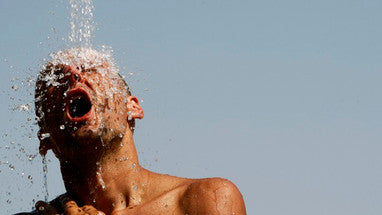The Bacteria Lurking in American Showerheads

The water that flows through your home is teeming with microbial life. Trying to kill it off likely does more harm than good.
In 1654, Rembrandt painted a woman, in Amsterdam, bathing in a stream. As she lifts her nightdress above her knees and treads deeper, the woman is stepping from one world into another. Among art historians, the transition she is making is metaphorical. But to a biologist, it is also ecological.
We imagine water to be clean, and we imagine clean to mean lifeless, and yet all the water you have ever bathed in, swum through, or drunk has been full of life, from bacteria to tiny crustaceans. So, too, the pipes in which it travels. As water passes through pipes in general and showerheads in particular, a thick biofilm builds up. Biofilm is a fancy word that scientists use to avoid saying “gunk.” It is made by individuals of one or more species of bacteria working together to protect themselves from hostile conditions—including the flow of water, which constantly threatens to wash them away—via their own excretions.
In essence, the bacteria poop a little indestructible condominium in your pipes, built of hard-to-break-down complex carbohydrates. But when the pressure is high enough, these species are let loose into the fine aerosol spray of water droplets pelting our hair and bodies and splashing up and into our noses and mouths. And in some regions, but not others, they increasingly seem to be making people sick.


